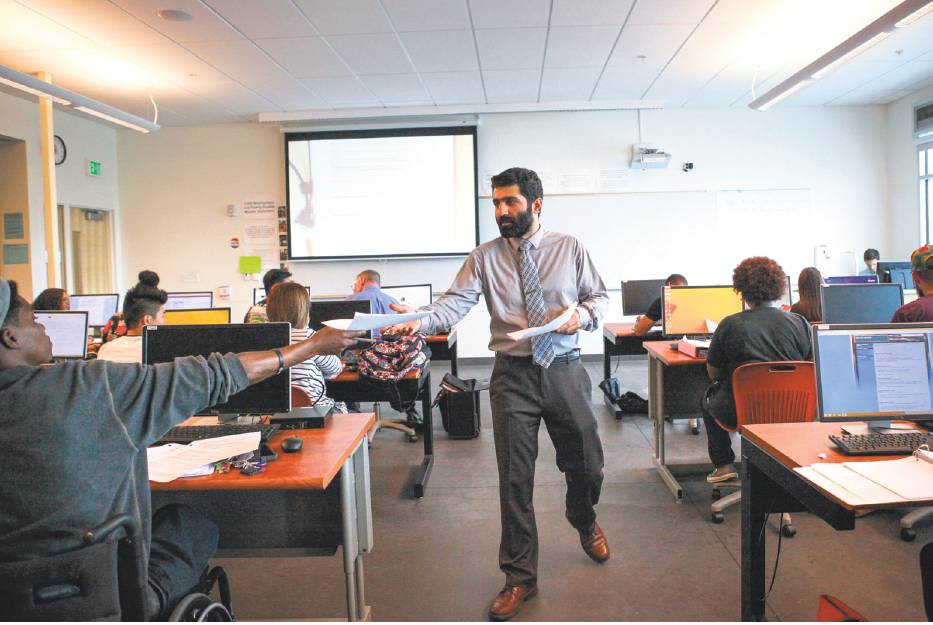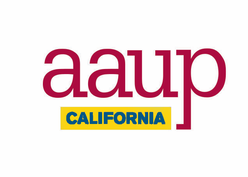The only group authorized to accredit California’s 113 community colleges is far too punitive and should be replaced, a task force convened by the state’s Community College Chancellor’s Office concluded Friday. The Accrediting Commission for Community and Junior Colleges is best known for its vigorous but so far unsuccessful efforts to revoke accreditation from City College of San Francisco, a huge school that served almost 70,000 students last year. Without accreditation, City College could receive no public funding and would have to close, as happened in 2006 to Compton College near Los Angeles. But the startling recommendation from the task force of 10 college leaders and faculty members — which was asked to evaluate the state of accreditation in light of concerns from college faculty and employees across the state, as well as politicians and the chancellor’s office itself — is based on more than just the outrage that has sizzled around City College for three years. The task force said the commission has for years resisted calls for it to change from focusing on the minutiae of compliance to doing a better job helping troubled colleges improve. In addition, the task force noted that community colleges and four-year universities are increasingly intertwined — the transfer system has improved, and some colleges are even offering bachelor’s degrees.
Reviewing the report
As a result, the panel is recommending that the state chancellor’s office replace the commission, perhaps by bringing community colleges under the wing of the WASC Senior College and University Commission, which accredits California’s four-year schools. The nation’s five other accrediting regions all have just one commission evaluating both levels of higher education. Until a new system is identified — which could then take years to receive the required recognition from the U.S. Department of Education — the task force is recommending that colleges continue to work with the commission. At the same time, a delay in repairing the problem “will have adverse effects” on students and the state’s economy, the task force warned. Commission President Barbara Beno said the group is reviewing the task force report. “The commission’s mission has remained the same for more than 50 years: assess member colleges’ academics, finances, facilities, technology and governance to point out deficiencies and provide recommendation and guidance to help colleges excel,” Beno said. “The ACCJC is committed to supporting the best higher education in the Western region.”
High level of sanctions
In its most damning criticism of the commission, the task force said that since 2005, the accreditor has placed two-thirds of California’s community colleges — all but 37 — on some level of sanction. Sanctions are imposed when colleges fall below accrediting standards of academic, governance or financial quality. In California, sanction levels include “warning,” “probation,” and the most severe, “show cause,” which requires the college to prove it should remain accredited or be shut down. City College of San Francisco was on “show cause” but has been placed on a special “restoration” status and has until fall 2016 to satisfy all accrediting standards. If the college fails, the commission could decide in January 2017 to revoke its accreditation. City College’s failures center on governance and financial standards, not on academic quality. “Although many of these institutions were removed from sanction relatively quickly, the numbers are inordinately high compared to the frequency of sanctions under other accreditors,” the task force said in its 270-page report. The commission is one of the nation’s six regional agencies recognized by the U.S. Department of Education. From 2009 to 2013, the commission’s sanction rate was about 53 percent (it issued 143 sanctions within 269 accreditation actions it took) compared with a sanction rate of about 12 percent by other accrediting agencies, according to the task force, which got the figures from a 2014 state audit of the commission. “Yes, our colleges have challenges, but that many sanctions? I must admit that does not make sense to me,” said California Community College Chancellor Brice Harris, a former commissioner who left in 2007.
Makeup of commission
Harris said he generally agrees with the report’s conclusion that the commission must go. He said he’s a strong believer in accreditation, which is a peer-review process. The commission is made up of 19 volunteers, including college chancellors, faculty members and education experts from California, Hawaii and Palau, where the commission also accredits colleges, plus representatives from some private colleges. But he said the primary point of accreditation should be on helping colleges improve and grow, rather than focusing entirely on compliance. The report spends several pages talking about what a good system would look like, including improving communication and respect between colleges and the ac-creditor. “I’m certain it won’t be a quick process,” Harris said, adding that the Board of Governors for the state’s community college system is likely to take action on the recommendation and direct his office to consider possible alternatives. “This will be a multiyear process,” he said. Any changeover “would probably take place as each college comes up for review.”
Panel ‘has lost its way’
Colleges are evaluated for accreditation every six years. News of the recommendation brought hope to the commission’s critics. “The ACCJC has lost its way,” said Joshua Pechthalt, president of the California Federation of Teachers, which represents instructors at 112 community colleges. “We need a commission with the best interests of students, faculty and public higher education at the center of its work. The ACCJC has other priorities. It forces colleges to waste faculty and staff time and taxpayer money on bureaucratic minutiae irrelevant to the classroom. It makes reckless and ill-informed decisions behind closed doors that harm the lives of thousands of Californians.” Accreditation commission member Frank Gornick said he’s not surprised by the recommendation. Gornick said it shows the undue influence of one commission critic — the California Federation of Teachers — which he said pushed state officials toward an agenda of finding fault with the accreditation process instead of the college. “It’s a political process, so people lose sight of the real focus, and that’s that there were significant problems with San Francisco City College,” said Gornick, who is chancellor at the West Hills Community College District in the San Joaquin Valley. “All we did as volunteers was point out the obvious six years ago, and no one wanted to make those changes. … We can’t walk away from financial abuses we see. We have to point them out. You know, kill the messenger.”
Nanette Asimov and Melody Gutierrez are San Francisco Chronicle staff writers. E-mail: [email protected] , [email protected] Twitter: @NanetteAsimov, @MelodyGutierrez Gabrielle Lurie / Special to The Chronicle
Photo by Gabrielle Lurie / Special to The Chronicle


 RSS Feed
RSS Feed